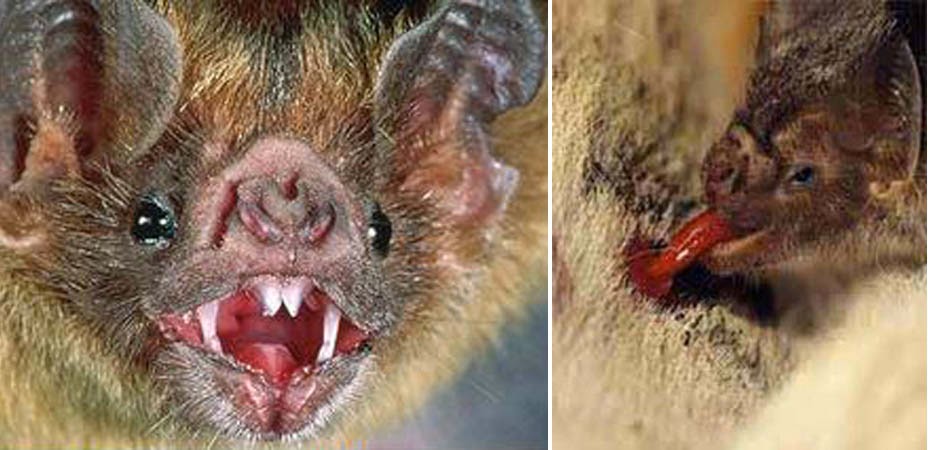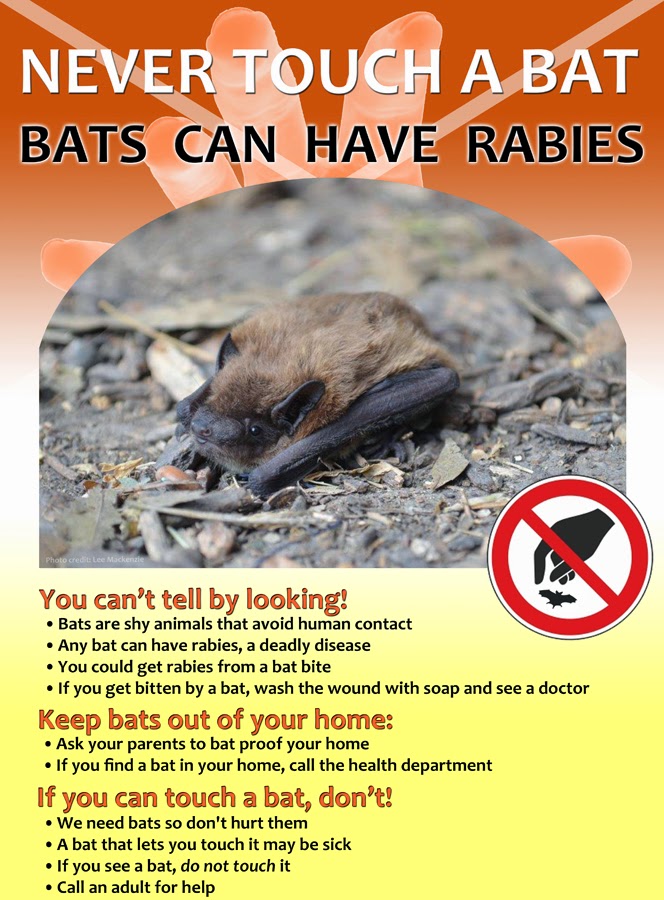Biology concepts- thermosensors, TRPV1, hematophagy, taste sense, alternate splicing, echolocation
Instinct tells the vampire that a good feeding once will probably mean a good feeding again – if they can find the same animal. So how do they find the same animal several night is a row? They hear them.
Now our bat friend has located a victim, found a surface vessel and taken a bite to let the blood flow. There’s yet another problem. Mammalian blood clots to prevent loss. The bats must either keep biting, which might wake their prey, or have a way to keep the blood flowing.
Vanderelst D, De Mey F, Peremans H, Geipel I, Kalko E, & Firzlaff U (2010). What noseleaves do for FM bats depends on their degree of sensorial specialization. PloS one, 5 (8) PMID: 20808438
Patel R, Ispoglou S, & Apostolakis S (2014). Desmoteplase as a potential treatment for cerebral ischaemia. Expert opinion on investigational drugs, 23 (6), 865-73 PMID: 24766516
Ma D, Mizurini DM, Assumpção TC, Li Y, Qi Y, Kotsyfakis M, Ribeiro JM, Monteiro RQ, & Francischetti IM (2013). Desmolaris, a novel factor XIa anticoagulant from the salivary gland of the vampire bat (Desmodus rotundus) inhibits inflammation and thrombosis in vivo. Blood, 122 (25), 4094-106 PMID: 24159172
Gröger U, & Wiegrebe L (2006). Classification of human breathing sounds by the common vampire bat, Desmodus rotundus. BMC biology, 4 PMID: 16780579
Gracheva EO, Cordero-Morales JF, González-Carcacía JA, Ingolia NT, Manno C, Aranguren CI, Weissman JS, & Julius D (2011). Ganglion-specific splicing of TRPV1 underlies infrared sensation in vampire bats. Nature, 476 (7358), 88-91 PMID: 21814281
It’s the nose of the common vampire bat (Desmodus rotundus). These bats belong to the family Phyllostomidae, one of three families of leaf-nosed bats (Rhinolophidae and Megadermatidae being the other two families). One of the exceptional skills mediated by this nose makes use of the same receptor that makes our mouths burn when we eat chili peppers. Vampire bats can detect the hot blood in your veins from far away!
It’s the noseleaves of the vampire bat that are so amazing, but maybe we should include the rest of the bat head as well. The ears, teeth, mouth, and eyes all work with the nose to give this bat some jet fighter skills.
Leaf nosed bats come in some very odd varieties. The picture on the below and right will give you some idea of the shapes and sizes possible. The question is – what’s the reason for these bizarre growths and why isn’t one odd shape enough? The answer will best be found if we know what their function is, because in biology – form follows function (except for proteins, see this post).
Two basic needs of the bat are to find food and find its way. Whether it's a fruit bat, an insectivorous bat, or a vampire bat, a bat must be able to negotiate obstacles within its environment and find a source of nutrition.
To accomplish these tasks, especially given that most bats are nocturnal, they use echolocation. They send out a high-pitched sound, and it bounces off objects and returns to their ears. This is very much like the radar used in airplanes. But this isn’t all they use. Bats can see just about as well as humans; the phrase “blind as a bat” might as well be “blind as a Bob.”
2010 study, the leaves aren’t used to gather the returning sound, but to focus the outgoing sound so that the “pictures” formed by the returning echos will be most accurate.
Different shapes help to increase the difference in the reflectivity of objects in the area of focus as opposed to those in the periphery. This allows the various species to hone in what they need to discern and dismiss those things that are uninteresting. Different backgrounds and different needs require different nose leaf shapes.
This answers the question about the wild shapes of noses, but it brings up another question. If vampire bats find their food by echolocation, sight, and smell, then why do they have heat sensors?
To answer this new question, consider the sizes of the vampire bat and its intended prey. The bat weighs about 2.5 oz (71 g), but it needs blood for food (mammalian blood for common vampire bats, bird blood for hairy legged and white-winged species). In fact, vampire bats are the only mammals that completely depend on hematophagy (blood meals). Because of this, they often feed on animals that are over 1000x their size.
The bats need to locate a place on the sleeping animals where blood vessels are near the surface. This is where the heat sensing comes into play. Vessels close to the surface will give off the most heat to the environment, and vampire bats can “see” these vessels from up to 20 cm away!
The vessels in question need to be covered with less hair, so the bat almost always goes for the lower leg or snout. They will land on the ground, and walk or run up to the prey from behind the animal to make the bite. Vampire bats wings are much stronger than most other bats, so they have an easier time moving along the ground, supporting some of their weight on their wings.
Instinct tells the vampire that a good feeding once will probably mean a good feeding again – if they can find the same animal. So how do they find the same animal several night is a row? They hear them.
A 2006 study showed that vampire bats do tend to feed on the same individual (be it human or cow) for several nights in a row. They can distinguish their previous victim by the sounds of their breathing! Every animal has a unique breathing pattern and sound profile, and the vampire bat can distinguish between individuals to find the one that matched a previous good meal. Imagine if we could find our favorite meal again by listening for the clinking of the right pans!
Returning to a good feeding spot each night, the vampire bat searches for a surface vessel to drink about 1-2 teaspoons of blood (4-5 ml). This isn’t enough to harm the animals, and is what allows them to go back several nights in a row.
How do vampire bats locate that ankle vessel they need to feed on? Back we go to that amazing nose. The heat sensors of bats are called pit organs, just like in the pit vipers we talked about last week. There are three to four of these organs in the noseleaves of the bat, and a couple across the upper lip as well.
As opposed to the pit vipers, vampire bats have adapted a heat sensor, not a cold sensor to use as their infrared detector for blood vessels. TRPV1, the same receptor that is used for the capsaicin burn and heat regulation in mammals, is present in very high numbers in the neurons of the pit organs.
But this is no ordinary TRPV1. Mammals can’t detect heat from 20 cm away with a regular TRPV1 – this is a modified TRPV1. A 2011 study found that this version of the protein is missing the last three amino acids on the carboxy terminus (the end produced last). This small change increases the sensitivity of the receptor from 43˚C all the way down to 30˚C, so that small differences in heat can be noted from almost a foot away.
One more amazing fact - the bats have regular TRPV1 too. The two version of the protein come from the same gene and the normal one is used throughout the bat’s body for all the things we use TRPV1 for: heat regulation, reproduction, cancer inhibition, etc. Only in the neurons of the pit organs is the mRNA altered after it is transcribed from the gene (alternately spliced) to make the slightly shorter, more sensitive protein.
 |
Here is a cartoon of how blood clots. On the bottom flow chart, the first anti-co line is where desmolaris and draculin work. The third line is where desmoteplase acts. |
Their mouths have specialized salivary glands that make anticoagulants so no clot is formed. There is one anticoagulant that someone with a sense of humor named draculin. It acts to prevent blood clot formation. We have mentioned a second anticoagulant before, called desmoteplase. One of our Halloween posts talked about how it may be good for people that have had strokes. It dissolves any clots that may form.
A 2014 clinical trial is showing that desmoteplase is better than the tissue plasminogen activator clot busters now being used (rtPA), since they have a half-life of four hours (as opposed to 5 minutes for rtPA) and it’s breakdown products aren’t as toxic to nerves and the blood brain barrier as compared to rtPA.
A newer anticoagulant is called desmolaris. A 2013 study showed that it works on yet another part of the clotting system to prevent clot formation. And this isn’t all of them. A 2014 protein survey suggests that there may be dozens more anticoagulant proteins in vampire bat saliva.
 |
| Which flying machine is more complex and cool? |
Lets add up the vampire bat’s technologies and compare them to an F16. The bat can fly and turn better. The bat has radar and infrared heat detection. It has high powered listening devices that can discriminate between two individuals. Finally, it has biological weapons that allow it to do its work without alarming the target.
All that in a “machine” that can fit into the palm of your hand. Defense aeronautical engineers must feel so embarrassed.
Next week, let’s take it just a bit further. Female mosquitoes aren’t just looking for you, they’re tasting and feeling for you. They use CO2 gradients as well as my prodigious heat to find me on a warm picnicking evening.
For more information or classroom activities, see:
Leaf-nosed bats –
Echolocation –
Alternate splicing –
Anticoagulants -





